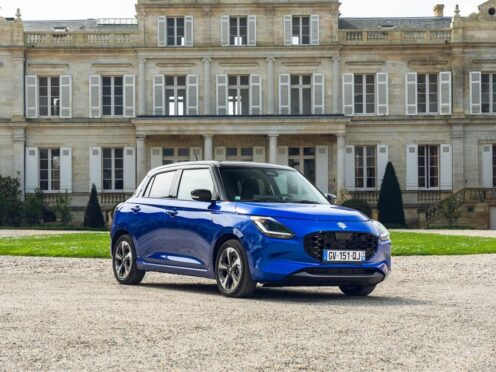What is it?
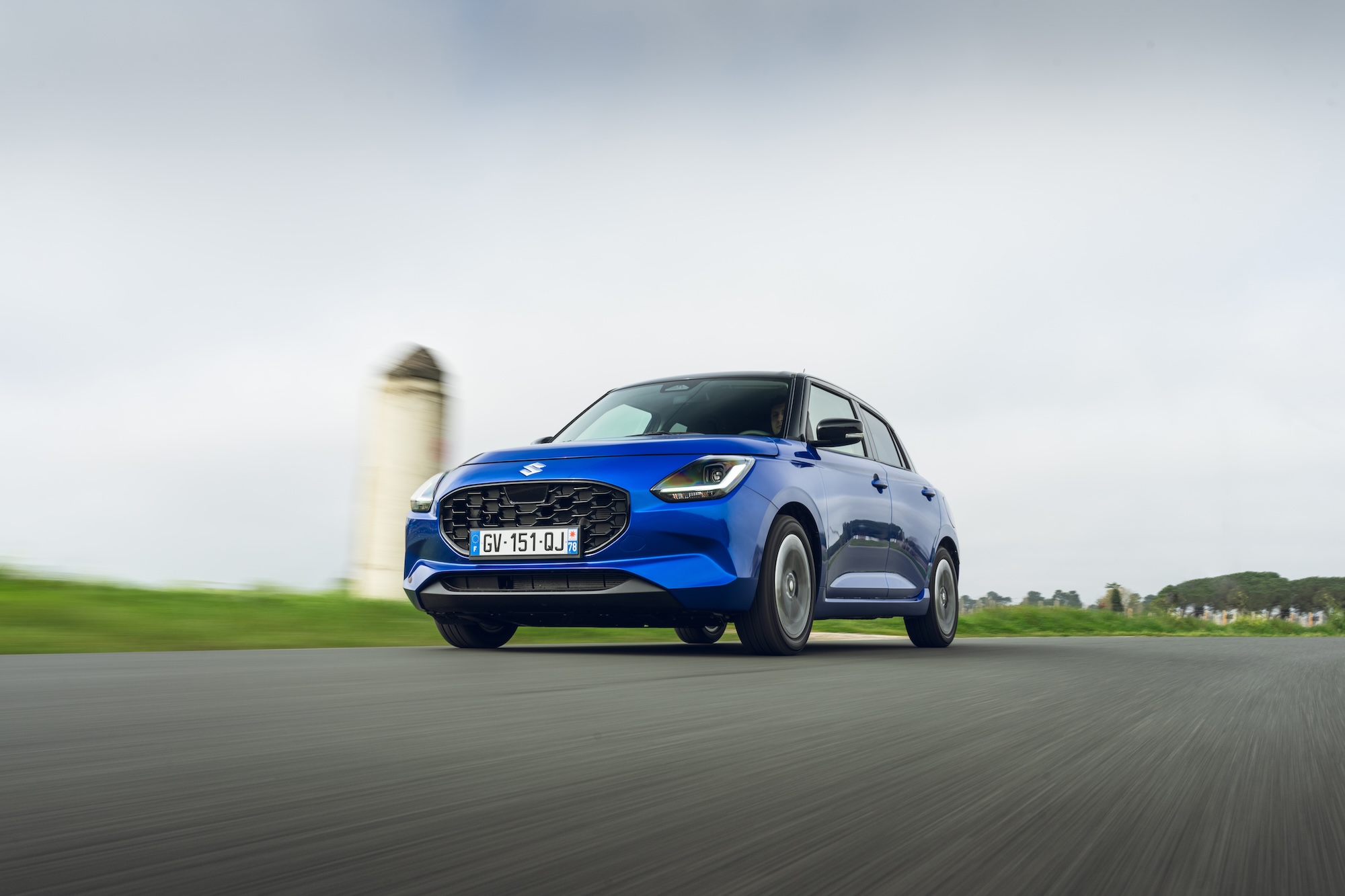
Small cars aren’t hot property right now. That’s certainly the view of carmakers who are concentrating their time on other projects, with some preferring to follow the large profits on offer from SUVs, while others are going all-in on electric cars. But not Suzuki.
The Japanese firm feels there’s still a huge need for small, light, efficient, and well-priced small cars, and with rivals such as Ford, Kia and Nissan abandoning this market it thinks customers are being ignored. It estimates some 250,000 Brits have bought a supermini in the last three years but won’t be able to buy another due to a dwindling range of models on offer. So, it’s launched a brand new Swift to appeal to this rather sizeable group of people.
What’s new?

This is a completely new supermini. While some car manufacturers are tweaking their older models to keep them on life support until an electric replacement arrives sometime in the future, Suzuki is starting afresh.
The design, though similar to previous Swifts, is new, the interior is new and just when carmakers are cancelling the development of new petrol engines, Suzuki has crafted a totally new one. It’s only really the platform that’s not shiny new as it’s a development of the old model’s.
What’s under the bonnet?

Let’s talk about that engine then. It’s a 1.2-litre unit with three cylinders, replacing the old four-cylinder unit, and has a stout 81bhp and 112Nm of torque. It comes as standard with a five-speed manual gearbox – yes, you read that right – or for £1,250 more you can have it with a CVT.
The engine also comes with a 12V mild hybrid system to help with efficiency – speaking of which, at 64.2mpg, it’s right at the top of the tree for fuel economy, and the cleanest by coughing out just 99g/km of CO2. Suzuki is even offering a four-wheel drive version with a 25mm increase in ride height – it arrives later this year.
What’s it like to drive?
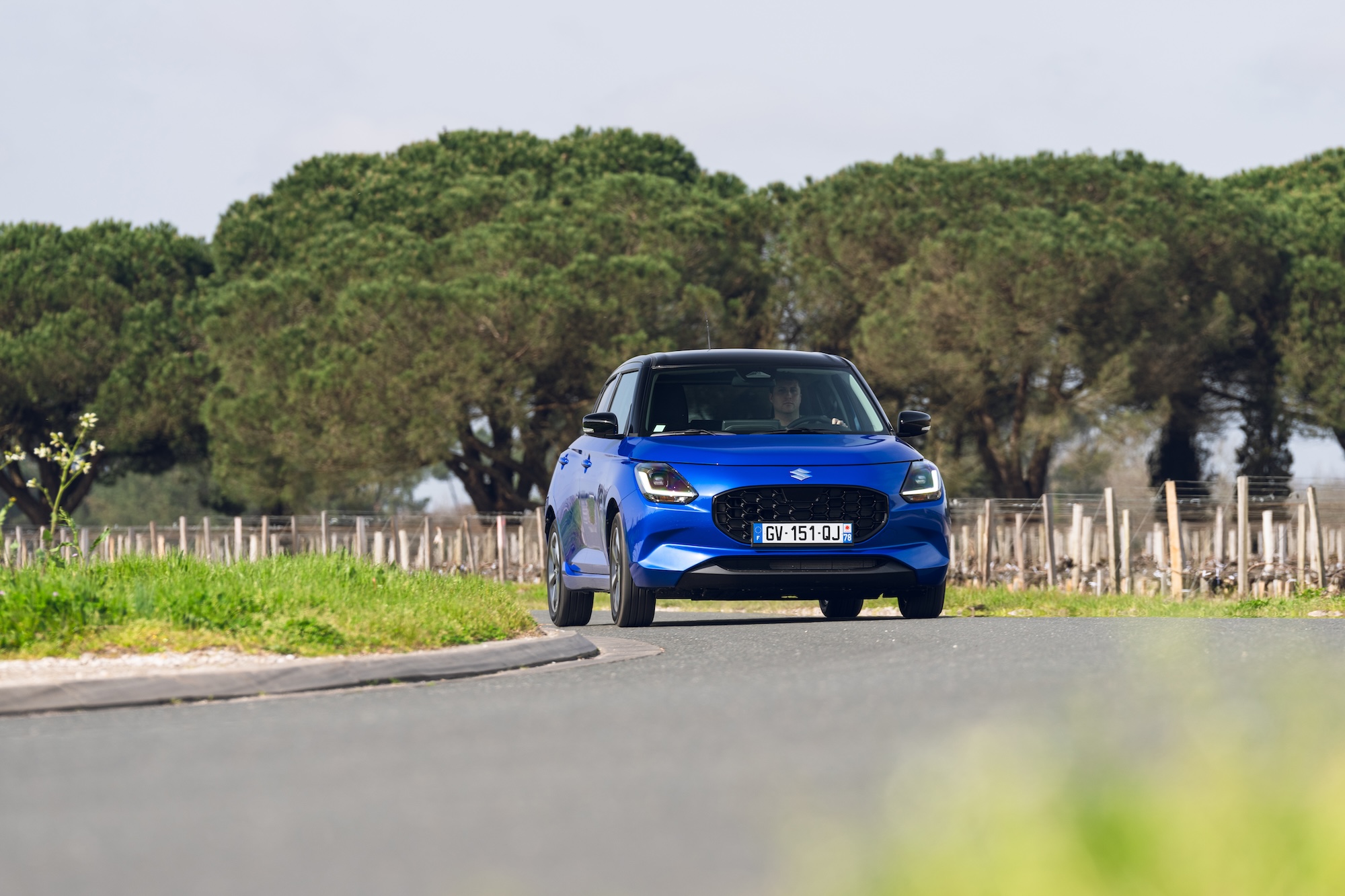
Suzuki certainly knows how to build engines as the little 1.2 spins sweetly, and despite three-cylinder units characteristically being a little on the rough side, it’s smooth. There’s more than enough punch in the low end of the rev range meaning it’s ideal around town, while the gearbox is a delight – it’s light and precise to use.
The old Swift always had a slightly overly firm suspension set-up, and though engaging to drive, it was always outshone by a Fiesta. This new one is quieter on the move, it’s slightly softer and deals better with bumps and potholes, and with the Fiesta being no more, the Swift is arguably the class leader for handling – the fact that the car is very light (it weighs under 1,000kg) certainly helps here. It’s a very enjoyable car to drive and a lovely contrast to often overly heavy EVs.
How does it look?
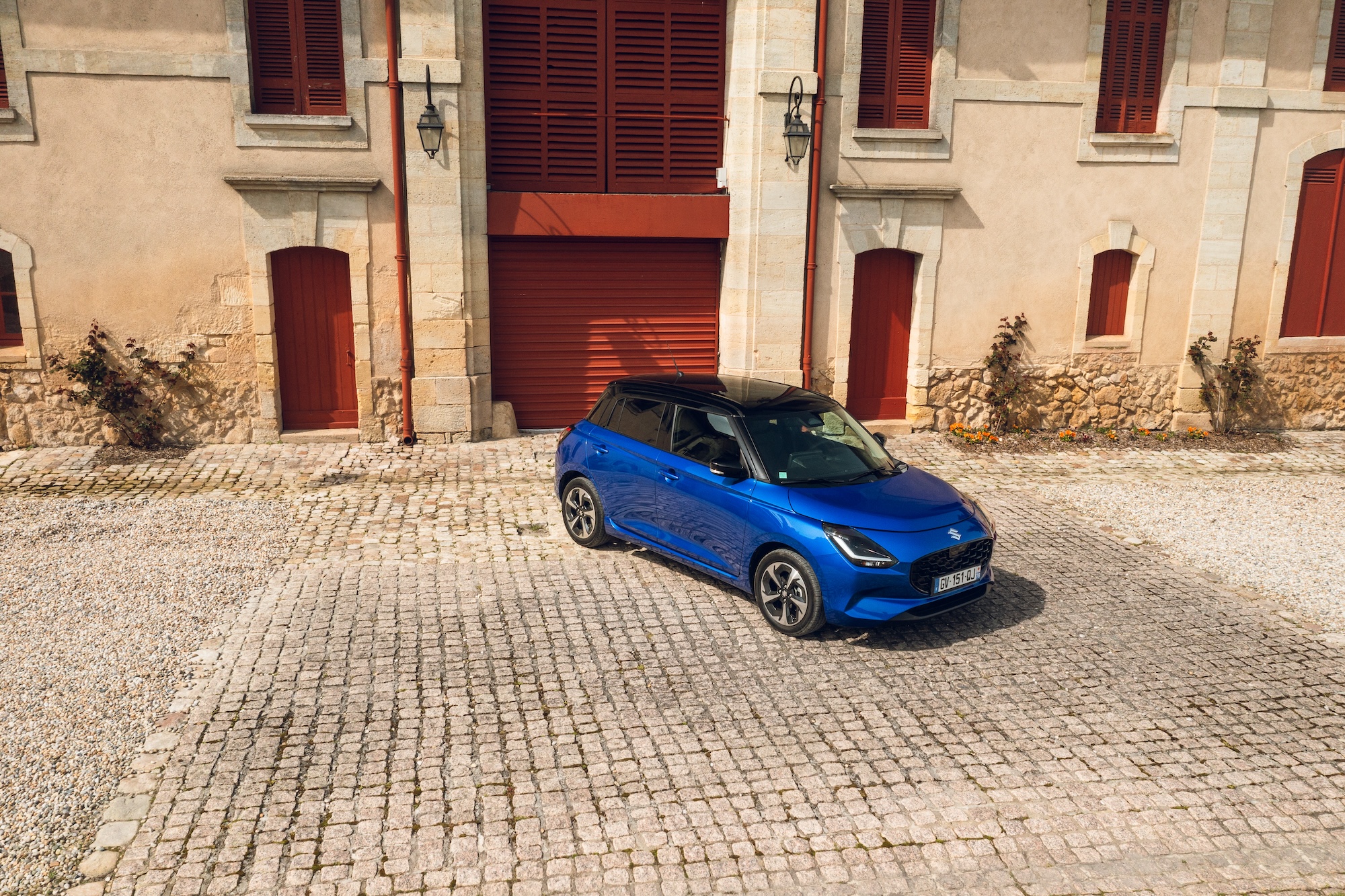
The design is completely new, but there are some clear carry-overs from previous Swifts such as the ‘floating’ roof, tall front headlights, and the neat rear end. There are some very noticeable differences, though, such as the wide, open-mouthed grille now without the Suzuki badge, and the crease that wraps around the whole of the car.
This line is most noticeable at the front as it forms the leading edge of the clamshell bonnet, but sadly it has the look of the bonnet not being closed properly. It’s still a handsome car, though, and looks distinctive from its rivals.
What’s it like inside?
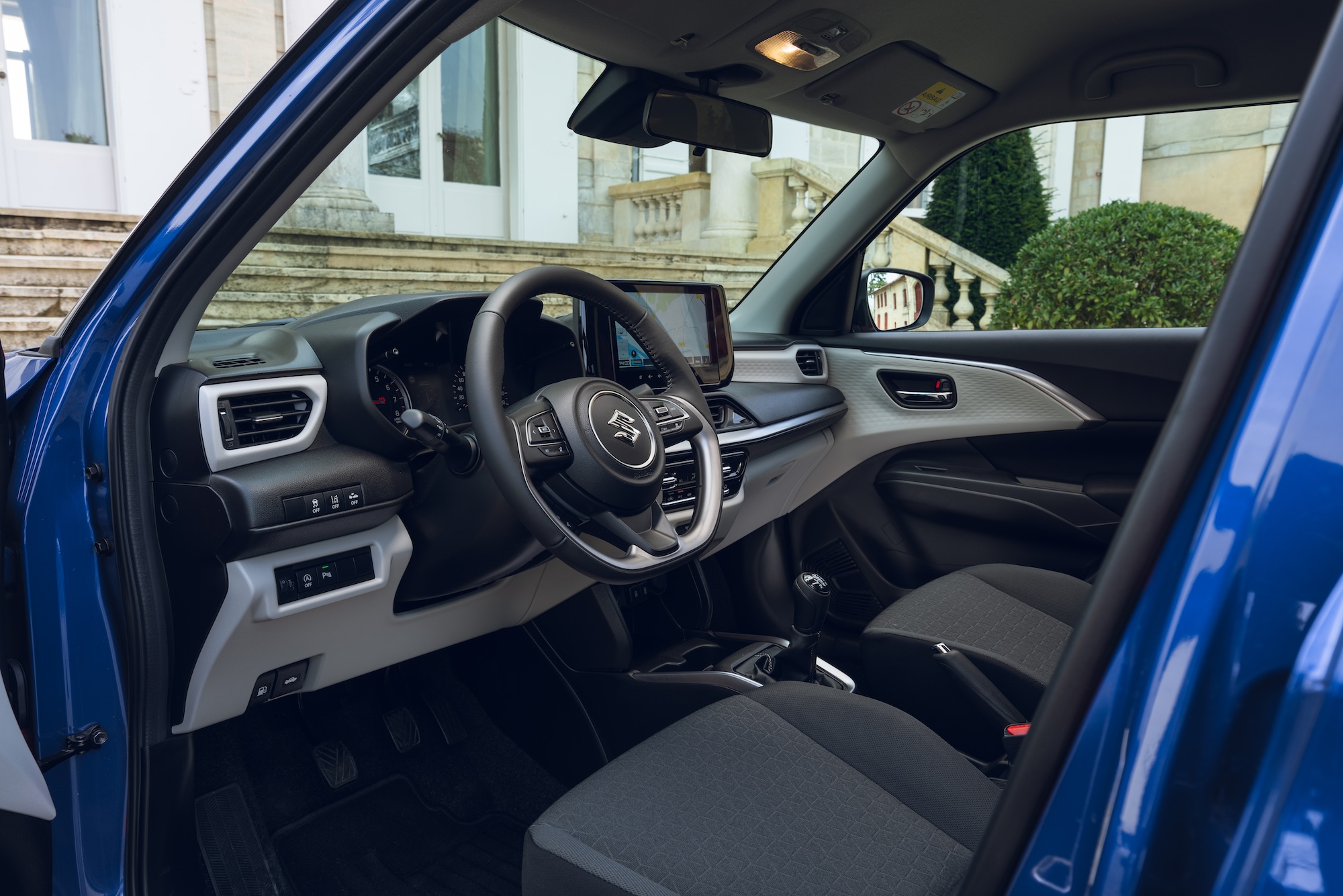
You can tell where some of the weight has been saved when you sit inside because the interior is covered in hollow, cheap-feeling plastics. A Renault Clio or a Skoda Fabia have more tactile materials for the dashboard and doors, but the Swift’s interior feels well screwed together, looks good and we’d bet it won’t fall apart.
The high-mounted nine-inch touchscreen doesn’t have the most attractive software around, but as wireless Apple CarPlay and Android Auto come as standard you won’t be using it that much. Happily, Suzuki hasn’t followed some rivals by burying the heated controls in the touchscreen as there’s a row of buttons for that, and there’s even a manual handbrake.
Space in the rear is good with decent head and kneeroom, and two people will be comfortable. At 265 litres (expanding to 980 litres with the seats folded), boot space is about right too.
What’s the spec like?

The Swift is surprisingly very well-equipped and keenly priced. There’s just a simple two-model line-up, with entry-level Motion getting 16-inch alloys, LED headlights, sat-nav, rear parking sensors and camera, adaptive cruise control, wireless smartphone connectivity, heated seats and a whole host of safety equipment. It starts at £18,699 and undercuts a number of rivals including the Fabia, i20, 208 and Corsa.
Ultra, from £19,799, tops the range and gets polished alloys, automatic climate control and electric folding mirrors. The four-wheel drive Swift will cost £21,049 when it arrives later this year.
Verdict

A brand new supermini with a petrol engine and a manual gearbox may sound like an anachronism in 2024, but the Swift will appeal to a whole host of buyers in the UK.
Its keen pricing and frugality will be enough to win over most buyers, but this is also a well-packaged small car that is brimming with character thanks to an eager engine and sharp handling.
